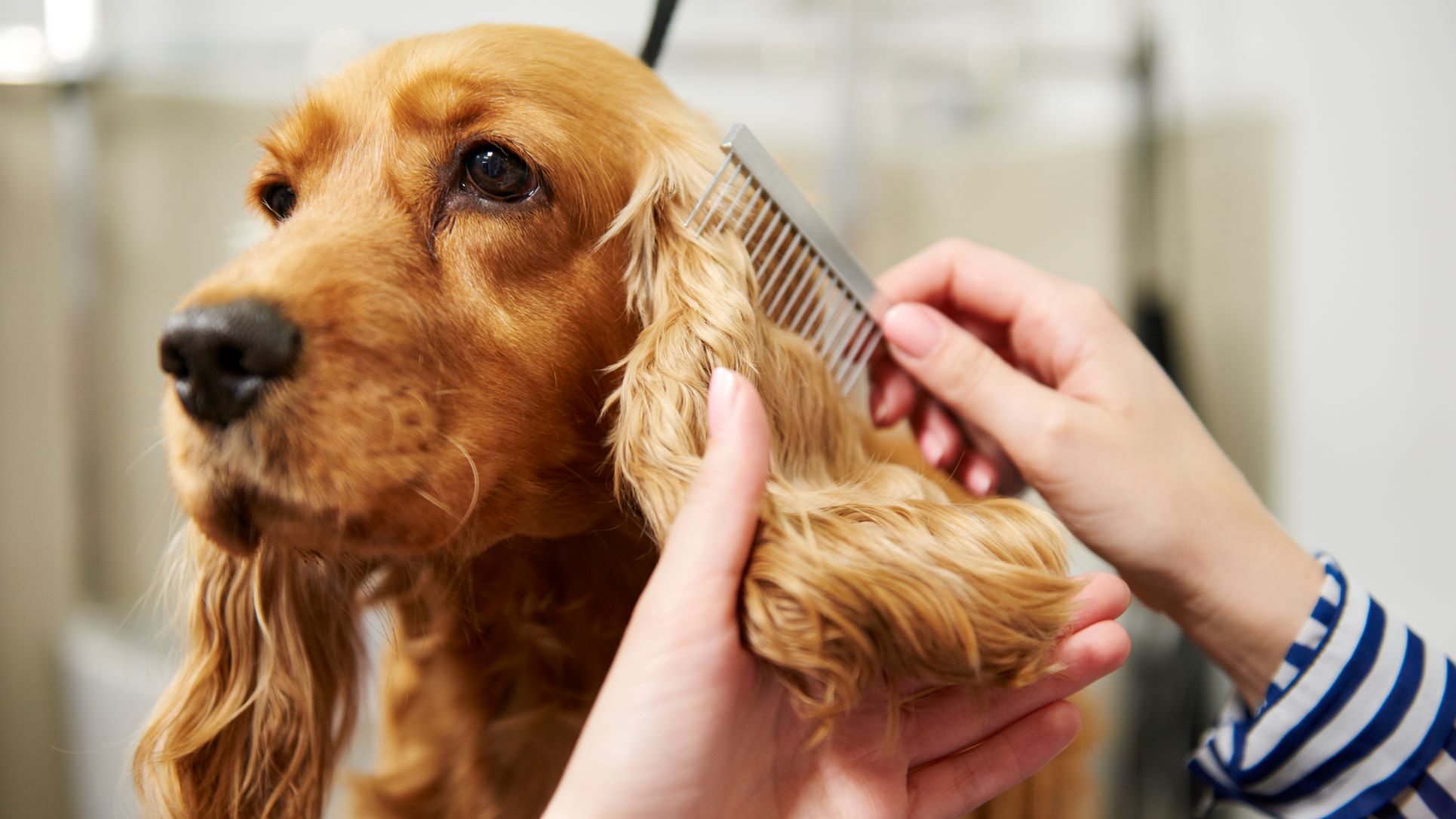This simple grooming mistake can pose a serious health risk for your dog
Have you felt behind your dog’s ears recently? Here’s why you should be regularly checking for mats

Properly caring for your dog is a mixture of a variety of factors, including having the right nutrition, good training and ensuring that their grooming needs are met. However, this can be easier said than done – especially since not everyone knows what they need to be looking out for.
While it’s not uncommon for dogs to develop small mats (especially if they’ve recently been exposed to water), you need to try your best to keep on top of them. No matter where they are on the body, mats are uncomfortable for your dog and pull on their skin. However, if the matting is behind the ears, then this can actually pose a genuine health risk for your dog.
This is because matting behind the ear can cause a hematoma, which is essentially an extreme bruise made up of burst blood vessels under the skin that have created a pocket of blood (akin to a blood blister). The hematoma can be formed due to the matting pulling the skin away from the internal cartilage of the ear in multiple directions. This can be enough to cause a hematoma in itself, but it can also be exacerbated by the dog shaking its head or scratching its ear – which are both behaviors that are common with dogs who are dealing with the discomfort of a matted ear. So, if you've been asking; why is my dog shaking his head, that could be why.
Depending on the type of dog you have (and what their fur is like), the amount and type of grooming you’ll need to do will be different from owner to owner. For example, poodle crosses are extremely prone to matting and need to be brushed correctly as often as once per day. Dogs with long, thick fur also need regular brushing to ensure they remain tangle-free. However, there are also plenty of dogs whose grooming needs are much less intensive, including short haired dogs such as greyhounds, beagles and vizslas.
With this in mind, the likelihood of your dog developing mats behind its ears will depend on the type of coat they have. If they have a coarse poodle-like coat, a double coat, or long fur, then there’s a higher risk factor and you should be checking for mats more often than shorter-haired dogs would require.
Lara Sorisi, a championship gun dog trainer and APDT-certified dog trainer, says, “If your dog is prone to matting behind the ears, it’s really important to get them clipped out. If the mat is too tight, it can pull on the capillaries in the ear. I know a groomer who has had blood burst from dogs’ ears after shaving out the mats – not because she did anything wrong, but because the mats were in such a bad state.”

Lara Sorisi is a science-based and force-free dog trainer that has been training dogs for six years. She is accredited by the APDT (Association of Pet Dog Trainers), which is one of the most rigorous dog training qualifications available. Lara holds a bronze-level qualification with UK Sniffer Dogs, which means that she is an accredited UK Sniffer Dogs instructor. She’s also formally competed in gundog trials for three years.
How do you know if your dog’s ear is matted?
One of the best ways to determine whether your dog is suffering from matted ears is to feel with your hands. It’s actually good practice to regularly do full body checks on your dogs, from their face to their back paws and everything in between. Not only will this help you keep on top of any forming mats, but it’ll also alert you to any other potential issues, such as ticks or injuries.
Get the best advice, tips and top tech for your beloved Pets
However, if you want an almost foolproof way to determine whether your dog has any matting (just feeling with your hands alone can cause you to miss the smaller mats), you’ll want to invest in a dog grooming comb. If you can run this through your dog’s fur against the skin (pressing lightly of course), then you can easily ascertain whether your dog is mat-free or not.

What should you do if your dog has matted ears?
For matting, preventative measures really are the best cure, so it’s important to be vigilant about any matting and take your dog for regular grooming so that mats don’t have a chance to develop. However, if you have discovered a mat, then you’ll need to try and get rid of it as soon as possible. Don’t be tempted to put the task off for later, as they tend to get worse with time (and can often get quite a lot worse quite quickly).
If the mat is severe, then the most humane way to get rid of it is to shave it out completely. Whether it’s done by yourself or by a groomer, this is the quickest and easiest way to ensure that the mat is gone as quickly as possible. If you’re not sure how to tackle this, we’d recommend booking in with a groomer. Not only will they be fully equipped to handle the mat, but they’ll also be able to give you advice on how to prevent matting in the future.
However, there are many dogs that can get anxious about being handled. Lara says, “Having worked closely with both vets and groomers, it’s been awful to hear about how many dogs are so traumatized by the grooming and veterinary process. As a breeder, it’s my duty to owners to ensure the importance of handling isn’t overlooked. In fact, I currently have five-week old puppies and I do handling desensitization with them every day – but it’s really important that owners continue this work at home.
“The reason it’s important to get dogs used to being handled is so that you don’t add stress to what can already be a very stressful situation. For example, if a dog has hurt one of its paws, not only is the dog in pain, but you’re also taking them to an environment where they’ll be handled by a stranger. If the handling preparation hasn’t been done correctly, a full-blown phobia can occur from just that single situation.
“I would recommend spending some time every evening doing a full body check on your dog, checking everything including eyes, ears, nose, mouth, teeth, chest, belly, legs, paws, tail, etc. It isn’t just essential for the vets and groomers – it also makes your life much easier, as you can wipe their paws off after a muddy walk or towel dry them if they’ve taken a dip in a river.”
Training your dog how to be handled by vets and groomers is an essential part of setting them up for success throughout their life. It’ll also help you keep on top of any mats that start to form in the future so that you can ensure your pup stays happy and healthy.
Need some tools to help keep your dog's fur in top condition? Check out our round up of the best dog grooming kits.
Louise Carey is a freelance writer and the Editor of sister website Top Ten Reviews. She has been working in publishing for seven years, contributing to publications including The Independent, TechRadar, Digital Camera World and more. As the proud pet parent of a reactive border collie with a food allergy, it’s been necessary for Louise to explore a variety of fun and exciting ways to enrich an energetic dog that can’t always go on walks. She’s passionate about sharing the information she’s learned to help other pet owners as well.

